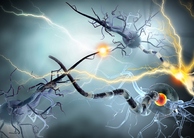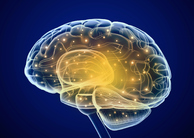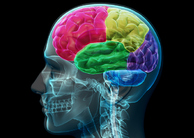Featured Article:Assessing the Impact of Adverse Childhood Experiences on Brain Development
By
2016, Vol. 8 No. 07 | pg. 1/2 | »
IN THIS ARTICLE
AbstractIn this paper, I review the course of brain development during childhood and adolescence and examine how early adverse experiences affect structural changes in the neural correlates of higher-order cognitive abilities. I also discuss the therapeutic potential for early intervention to mitigate problematic developmental outcomes. Finally, I provide a brief summary of the major conclusions made from this body of evidence. Meeting the developmental needs of children lays the groundwork for lifelong physical and mental health. Changes in brain connectivity and network topology occur during infancy and continue throughout childhood and adolescence. It is well established that postnatal brain development is characterized by a substantial increase in the number of synapses.16 This overabundance of synapses within the brain fosters maximal adaptation to the environment, and during development, neurons or synapses that receive only minimal stimulation wither away.16 Following synapse proliferation, the pruning of less active synapses reduces the number of connections between neurons and increases the efficiency of neuronal transmission. Myelination is another process involved in brain development, and it functionally supports increased neuronal conduction, speed, and communication.Sensitive periods in brain development mark critical points in which a particular neural network has a higher plasticity and is more open to environmental fine-tuning.16 These distinct periods occur throughout the brain in a region-specific and time-dependent manner. Adverse experiences early in life occur at a developmental point in which the brain has heightened sensitivity to environmental input. These experiences can critically disrupt structural properties of brain development and change circuitries involved in higher-order cognitive processes. The following sections detail how early-life exposure to adverse experiences alters normative development of brain network architecture and higher-order cognitive abilities, as well as the potential for therapeutic intervention to reduce the risk of problematic outcomes. The Development of Brain Network ArchitectureEvidence across a number of studies indicates that changes in brain connectivity throughout childhood and adolescence reflect regional differences in maturation.5,10 These findings suggest a sequential model for fiber tract development in which the strengthening of connections between modality-specific regions occurs early on in childhood, followed by the forming of connections from modality-specific regions to association regions, while the strengthening of synapses between frontal and parietal association cortices is characteristic during adolescence.10 The largest age-related changes occur in the association fibers within the frontal and parietal lobes, as well as between them. These association areas of the brain contribute to higher-order cognitive abilities in humans.10 The frontal lobe consists of the primary motor, premotor, and prefrontal regions. Distinct cytoarchitectonic characteristics are used to divide prefrontal regions into dorsolateral, orbital, and medial regions. Findings have shown that adolescence marks a period in which the prefrontal cortex (PFC) forms continued connections with limbic areas.10 The PFC exhibits top-down control over limbic regions and governs the regulation of emotions. Thus, exposure to adverse experiences during this period in brain development may elicit problems in emotion regulation. The PFC is the last brain region to complete myelination, and its extended sensitivity to environmental experience is advantageous for tailoring neurobiology to environmental surroundings.10 However, in the absence of an optimal environment or when the early environment elicits maladaptive adaptations, this sensitivity poses challenges for the brain to reach its full genetic potential. Therefore, the extent to which early-life stressors shape prefrontal development is an important public health concern. This review examines two different forms of abnormal caregiving that children can experience – psychosocially-deprived institutional rearing and maltreatment within family settings. Exposure to either of these experiences at periods when the brain is highly sensitive to environmental input increases risk for a wide span of developmental difficulties across both cognitive and emotional domains, underpinning problematic outcomes. Consequences of Psychosocial Deprivation on Brain StructureAccess to stable caregivers throughout early childhood and adolescence is critical for ongoing brain and behavioral development. Caregivers must provide an environment that is nurturing, loving, and stimulating to provide input that guides development of the neural circuitry which underlies higher-order cognitive, social, and emotional capabilities in humans. There has been an increased effort to understand the consequences of adverse rearing experiences on the structural properties of brain development. This particular form of adversity focuses on experiences that compromise the relationship between child and parent. Institutional rearing provides a useful model for examining the effects of early life neglect on brain structure, and evidence suggests structural alterations in the brain development of adopted children. The structural development of limbic circuitry occurs relatively early and rapidly in the course of human brain development, which may make these regions more susceptible to early adverse experiences. The subcortical brain structures that have been the particular focus in most studies are the amygdala and hippocampus. Smaller4 and larger8 amygdala volumes observed in institutionally reared children have made it difficult to label the pattern of amygdala growth following adversity. There have since been several influential factors considered to potentially contribute to these seemingly discrepant findings across studies. One obvious explanation is that different techniques used to estimate volume are not equivalent and will not provide consistent measurements.8 When smaller amygdala volumes were observed in children reared in an orphanage, automated segmentation was the method used to provide volumetric estimates.8 In contrast, the use of the hand tracing method in another study documented larger amygdala volumes in children that were reared in an institution.4 Other studies have shown an association between the magnitude of volumetric change and the amount of time spent in the institutional environment.8 Some evidence has indicated that the degree of volumetric decrease is functionally related to the cumulative life stressors an individual faces.4 The majority of studies involving adopted children have not shown any hippocampal volume changes relative to healthy controls.4,8 The PFC in humans exhibits a prolonged period of structural development.16 Volumetric reductions were observed in certain PFC regions, including superior, middle, and inferior frontal gyri, orbital frontal cortex, and anterior cingulate cortex.5 Both earlier adopted children and their later adopted counterparts showed reductions in cortical surface area, but only later adopted children had reduced cortical thickness, suggesting that prefrontal volumetric decreases in the early adopted group are due primarily to observed decreases in cortical surface area but not thickness.5 Currently, the neurobiological mechanism underlying these changes in prefrontal thickness, surface area, and volume is unknown.5 Chronic behavioral stress has been modeled in adult rats and exhibited decreases in length, number of branches, spine volume, and total number of apical dendrites in medial PFC.17 Atypical structural brain development is a potential biological marker that predicts behavioral responses in foster children and may explain why particular cognitive and social-emotional problems emerge during PFC-related tasks. Consequences of Psychosocial Deprivation on Brain FunctionThe impact of institutional rearing on brain function has not been studied as extensively as it has been in regard to brain architecture. Nevertheless, the majority of evidence indicates that institutional rearing experiences have lasting effects on functional brain development. The amygdala plays an important role in the detection of emotional information and supports fear and emotional learning.16 Relative to controls, foster children exhibited increased levels of amygdala activity in response to fearful faces, but no difference between the groups was observed for neutral faces.7 Increased amygdala activation was associated with the length of time reared in an institution.7 This heightened activity in the amygdala co-occurs with an increased vigilance to emotionally salient stimuli.7 Given the mixed evidence on the functional relationship between institutional rearing and volumetric changes in the amygdala, it is worth mentioning that numerous studies have given credence to the idea that longer durations of institutional care correspond to more substantial emotional difficulties.7,18 Cognitive control is defined as the ability to carry information that is currently representative of goals as well as a design to achieve such goals. In one study that used an inhibitory control task to compare brain activation in foster children to that in normal children, the bilateral inferior frontal gyrus and right anterior cingulate cortex exhibited higher levels of activation during no go trials relative to go trials.14 This difference in the patterns of brain activation between groups suggests that institutional rearing experiences impacted the neural correlates of inhibitory cognitive control. Damage to right inferior frontal regions compromises performance on the no go task, which indicates the importance of these regions in response inhibition.15 It is well documented that post-institutionalized children commonly have difficulties with social relationships and that social competence varies inversely with amygdala reactivity to fearful faces.20Continued on Next Page » Suggested Reading from Inquiries Journal
Inquiries Journal provides undergraduate and graduate students around the world a platform for the wide dissemination of academic work over a range of core disciplines. Representing the work of students from hundreds of institutions around the globe, Inquiries Journal's large database of academic articles is completely free. Learn more | Blog | Submit Latest in Neuroscience |


















